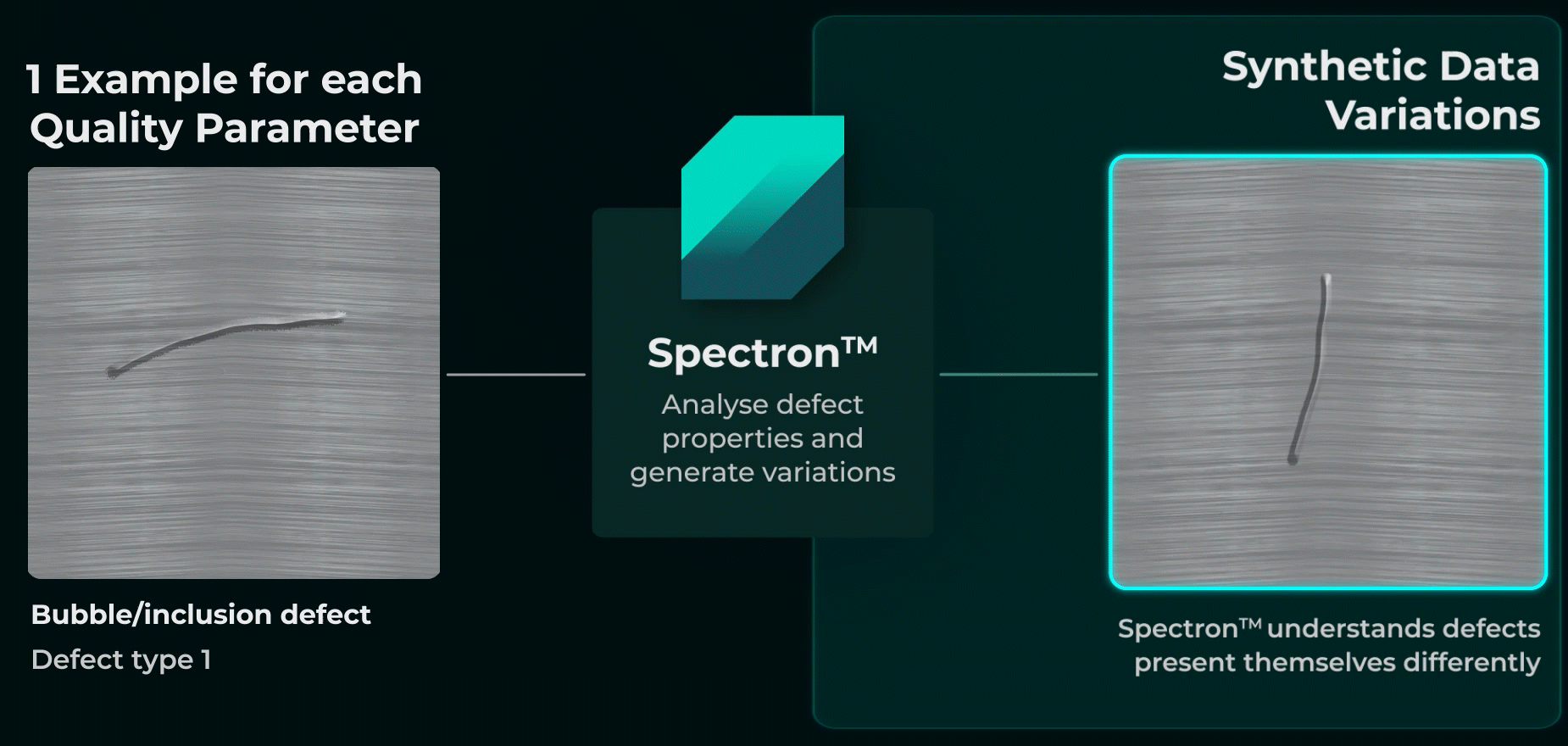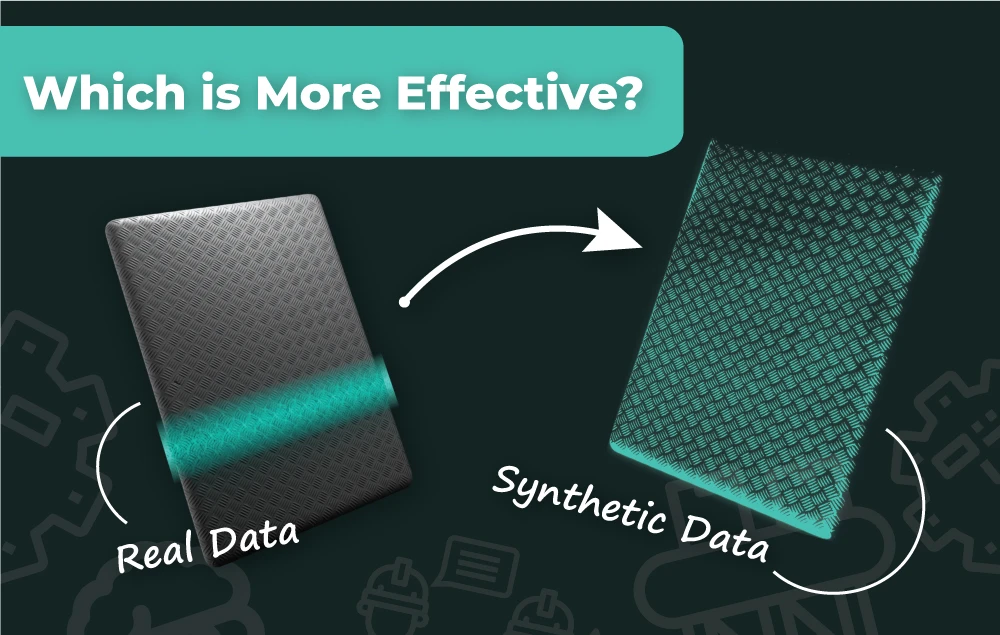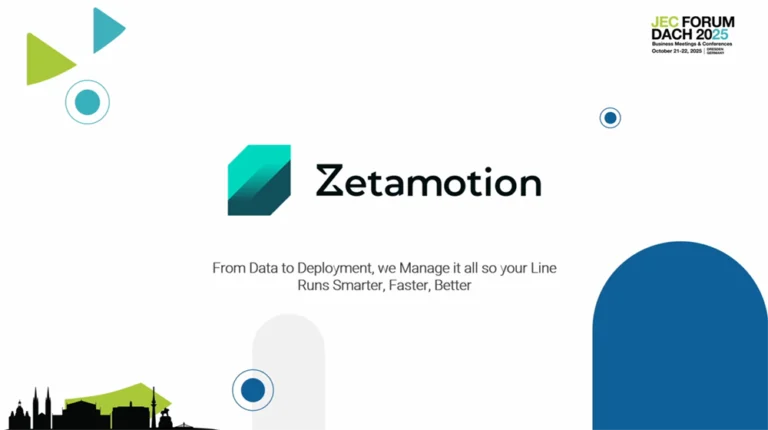As manufacturers increasingly turn to AI-driven solutions to automate inspections, one key problem arises: Data. How to find it, capture it and curate it.
More recently, “synthetic data” has appeared as a potential solution, bringing with it additional questions. Should companies rely on real data or embrace synthetic data for training their AI models? Both approaches have their advantages, but when it comes to achieving the highest levels of accuracy and scalability, synthetic data is quickly becoming a game-changer in the industry.
What is Real Data?
Real data refers to actual data collected from real-world production environments. In the context of quality control, this data is typically gathered from sensors, cameras, or manual inspections, and it reflects the exact conditions of the manufacturing process. For years, curated real data has been the foundation for training AI models that power automated quality control systems. You can read more about data quality standards here.
Advantages of Real Data
Familiarity: Since it’s collected directly from the production line, there’s a comfort level with using it to train AI systems, as it mirrors the reality of day-to-day operations.
Diversity: With enough collection, real data can cover a wide range of variations and edge cases.
Disadvantages of Real Data
However, collecting and using real data for AI training is not without its challenges:
Time-Consuming: Gathering large amounts of real data for every new product or variation can take weeks or months.
Costly: Obtaining and curating real-world data is resource-intensive, both in terms of labor and capital, prompting businesses to explore synthetic alternatives to cut costs.
Inconsistent Quality: Real-world data can be noisy or incomplete, which often requires extensive cleaning before it can be used effectively.
What is Synthetic Data?
Synthetic data is artificially generated information that mimics real-world data. It is created using algorithms, simulations, or AI models that replicate the characteristics of real data but without the need to physically collect more than a few examples from a production line. In automated quality control, synthetic data can be used to simulate product defects, surface variations, and other critical parameters needed to train AI systems.

Advantages of Synthetic Data
Speed: Synthetic data can be generated quickly and efficiently, allowing AI models to be trained and deployed faster IBM Synthetic Data.
Cost-Effective: Without the need for manual data collection or labelling, synthetic data dramatically reduces costs. For instance, Zetamotion’s Spectron™ platform can onboard new products with just one scan. This means, with one scan, Spectron™ can synthesise all required data to train itself and achieve outstanding levels of accuracy. Learn more about Zetamotion’s use of synthetic data here.
High Accuracy: By using synthetic data, manufacturers can achieve 99.99% accuracy in defect detection, as it allows for the generation of perfectly curated datasets.
Scalability: Synthetic data can be tailored to simulate a wide range of scenarios, product types, and manufacturing environments, making it an ideal solution for scaling quality control across diverse product lines.
Disadvantages of Synthetic Data
Despite its advantages, synthetic data does come with certain limitations:
Outlier Cases: In some instances, synthetic data may not fully capture rare, unpredictable events that occur in real-world environments.
Environmental noise: Similar to the outliers above, real-world conditions can sometimes change unpredictably, which can be challenging to account for in synthetic data sets.
How Zetamotion Uses Synthetic Data to Solve Quality Control Challenges
Zetamotion’s Spectron™ platform takes full advantage of synthetic data to overcome the challenges typically associated with real data. With Spectron Graphics™, synthetic datasets are generated from minimal primary data — as little as a single product scan — eliminating the need for extensive manual labeling.
This capability allows manufacturers to:
Deploy AI models within 24 hours, skipping months of training cycles and immediately achieving 99.99% accuracy.
Onboard new products effortlessly, regardless of variations in size, shape, or material.
Reduce the total cost of ownership, thanks to the significant savings in data collection and training time.
By leveraging synthetic data, Zetamotion helps manufacturers implement scalable and highly accurate quality control systems that can handle the complexities of modern production environments, without the traditional bottlenecks.
Cognizant of the potential challenges of synthetic data, Zetamotion has introduced an AI assistant, which ties in human expertise and experience, e.g. regarding outlier cases. With this, Zetamotion not only solves for unpredictable circumstances but also provides a valuable knowledge and skill preservation tool.




